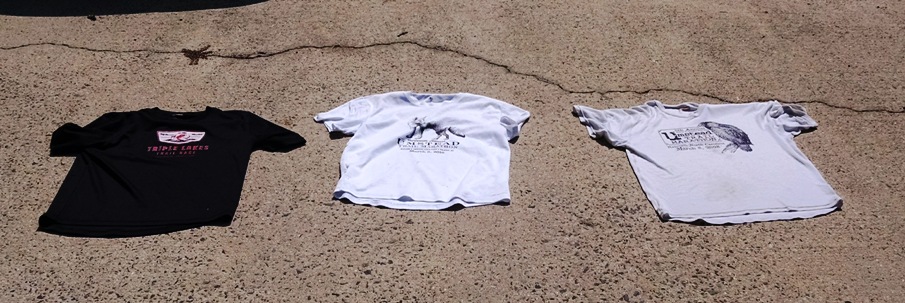
When running on a hot, sunny day, is a black shirt really hotter than a white shirt? By how much? Is a technical fabric better than cotton? Can a tech shirt really keep you both “warm and dry” and “cool and dry”?
In this month's column, I will attempt to answer these questions, even though you are reading this in November and it’s probably dark and cold out. But I started this in July, and you know, science takes time.
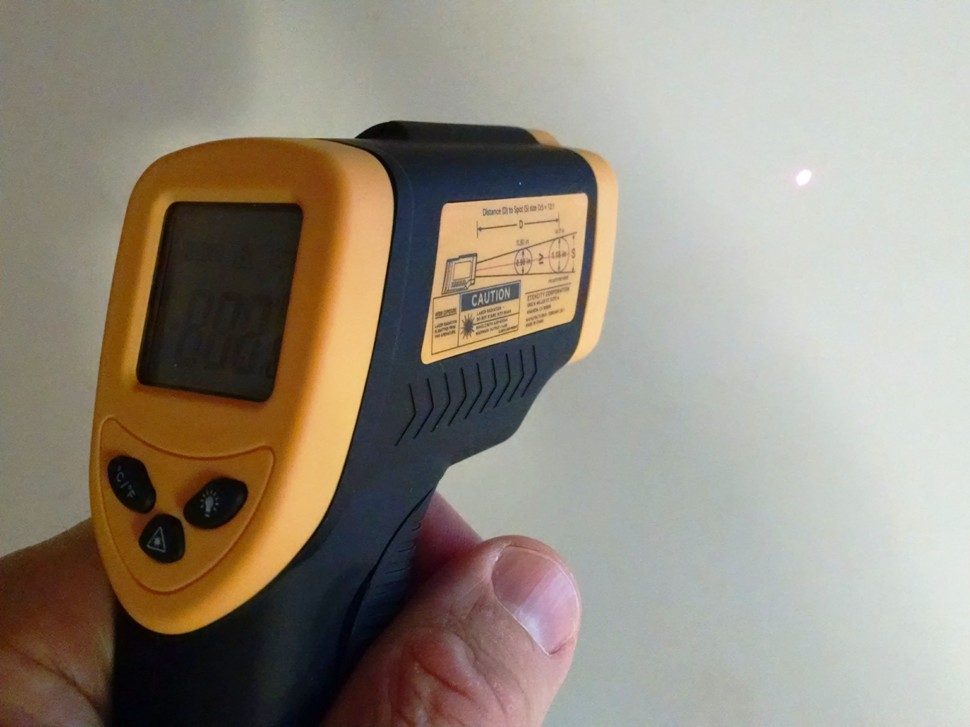
Now, I could provide you with some actual, useful information by reviewing existing credible research on this topic. But that seems like a lot of dull work. Honestly, I am just looking for a way to rationalize my purchase of the “Etekcity Lasergrip 774 Non-contact Digital Laser Infrared Thermometer Temperature Gun” (only $18 on Amazon!). And whenever there is a choice between “boring research” and a “laser gun," "laser gun" is going to win every time.
So the first thing a scientist does is calibrate the instruments. So let's see if this “laser gun” is accurate. I tested it on some ice water, which should be about 0 °C, and boiling water, which should be about 100 °C .
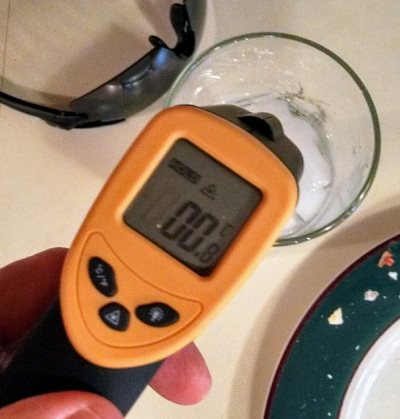
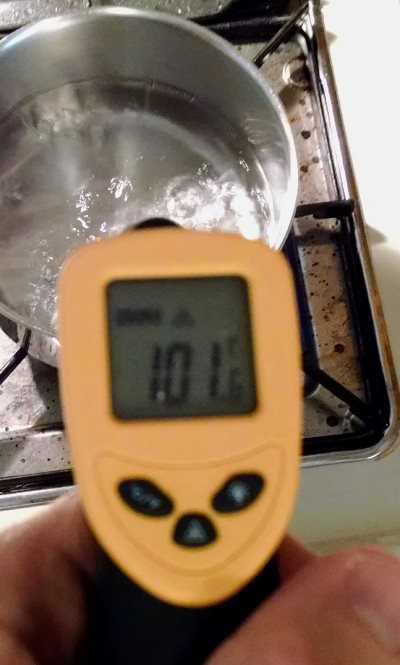
Success! To be honest, I had to try several times to get the expected readings, because I think the laser has trouble with a clear liquid like water. But hey, if you are looking for rigorous scientific methodology in this column, you have come to the wrong place.
So let’s take a look at the temperature difference between white and black shirts. While we are at it, let’s see what happens with evaporative cooling as well. I laid out three technical fabric shirts in my driveway on a hot July day: a white shirt, a black shirt, and another white shirt that was soaked with hot water. I then let the shirts sit out in the hot sun for about a half an hour.
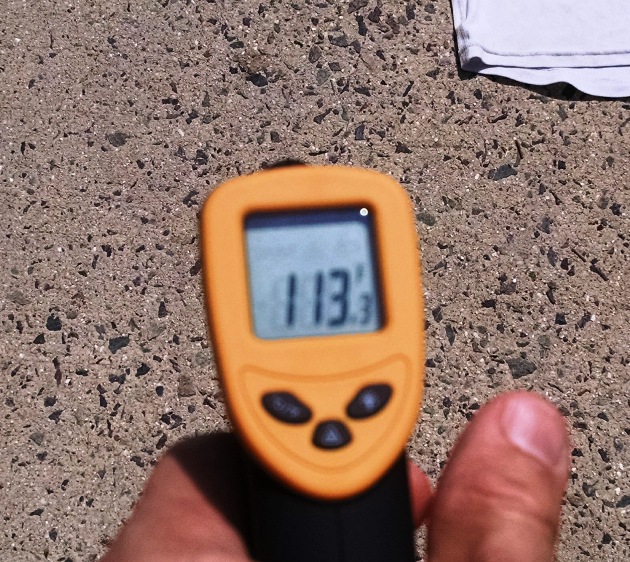
For reference, the driveway was 113 °F. Nice and warm on the feet.
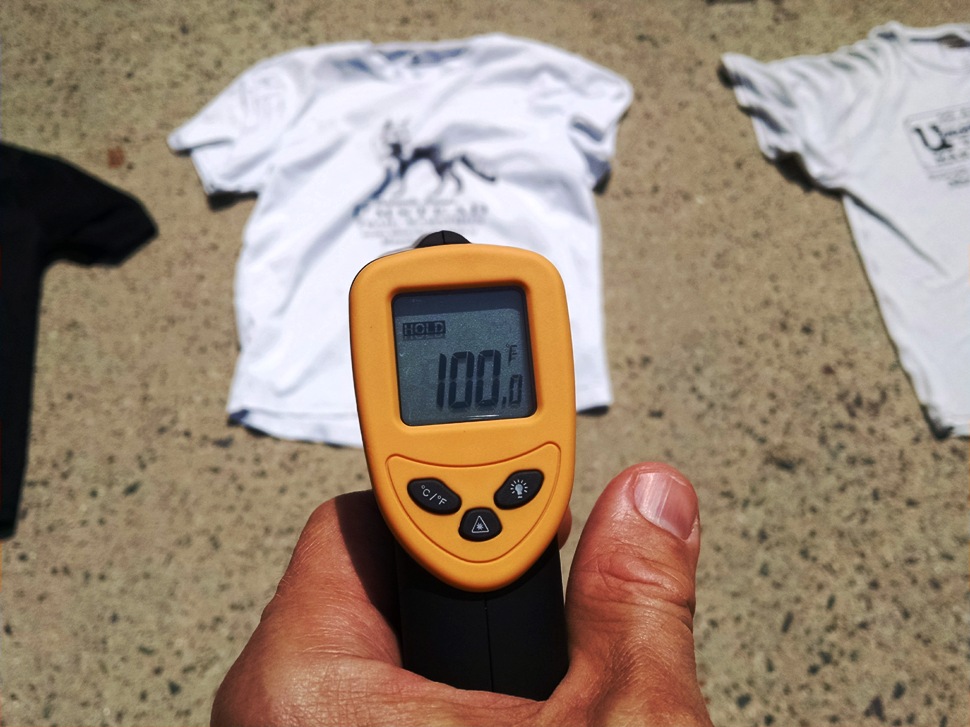
The dry white shirt was a relatively cool 100 °F.
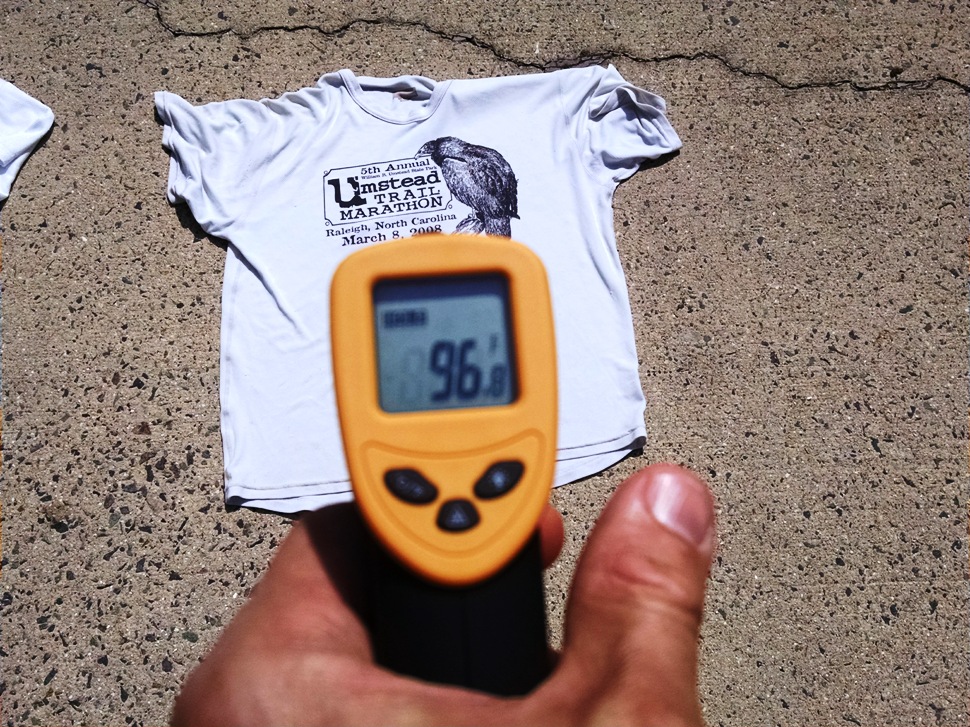
The wet shirt was even cooler at 96°F, showing the effects of evaporative cooling.
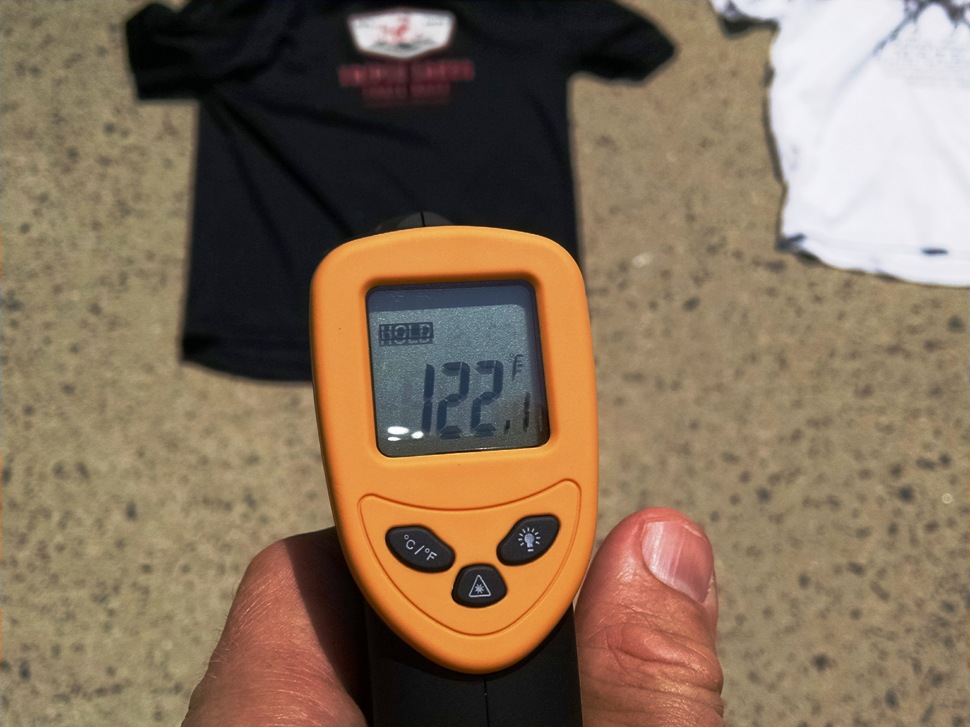
The black shirt was a whopping 122°F! So what does that tell us? That the surface of black shirts are hotter than white shirts. But does that mean wearing a black shirt will make you hotter? Can't really say that for sure.
We need to see how much of that heat is transferred underneath the shirt. So on another day, I laid out three identical thermal packs. One was wrapped in a white shirt, another in a black shirt, and another went shirtless. I let them sit out there in the sun for an hour or so.
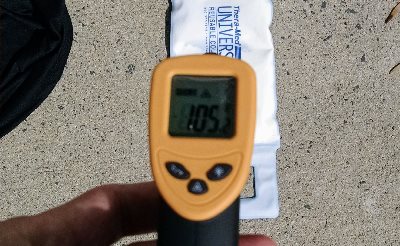
The thermal pack with no shirt ended up at 105 °F.
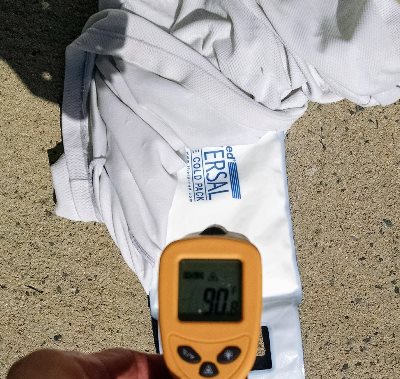
The thermal pack in the white shirt was a cool 90°F. So if you are an ice pack, you should wear a shirt to keep cool on a sunny day.
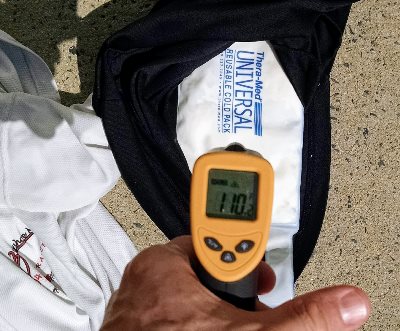
However, if you are an ice pack, don't wear a black shirt. The thermal pack with the black shirt ended up with a reading of 110°F, a full 20°F more than the white shirt.
So what does this mean to a human, who is 100 times the size of a thermal pack, generating heat, and sweating? I have no idea.
I think we can say that wearing a black shirt on a sunny day will make you hotter than a white shirt. Whether it is a significant amount, I cannot say. But you probably already knew that.
So now let’s take a look at evaporative cooling.
We will use gallon jugs of tap water as test subjects. They makes a good simulation of runners, at least in terms of personality.
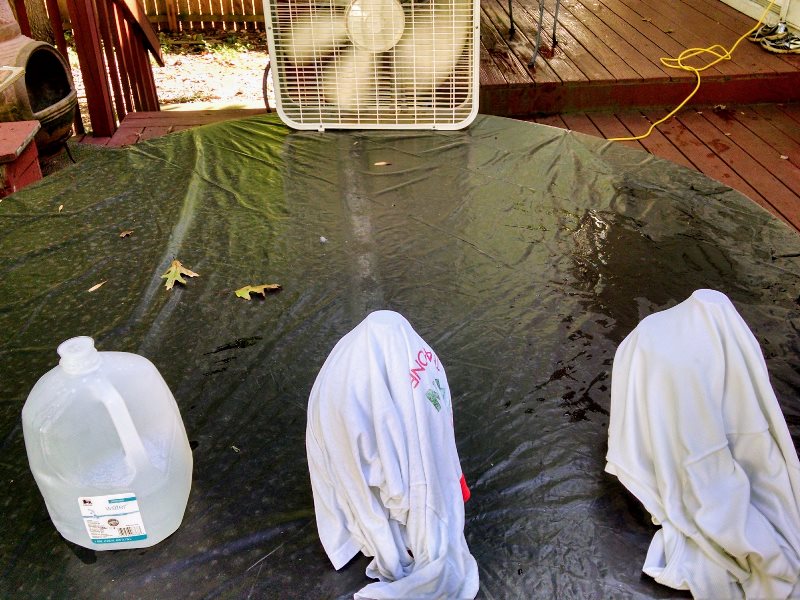
I filled three one-gallon jugs with hot water. To limit the effects of the sun, I placed them in the shade on a day with a relatively low humidity of 50%. One was wearing a white tech shirt, another a white cotton shirt, and the third had absolutely no shame and went shirtless. A fan was placed a few feet away to simulate a nice breeze. The breeze felt about equal on all three.
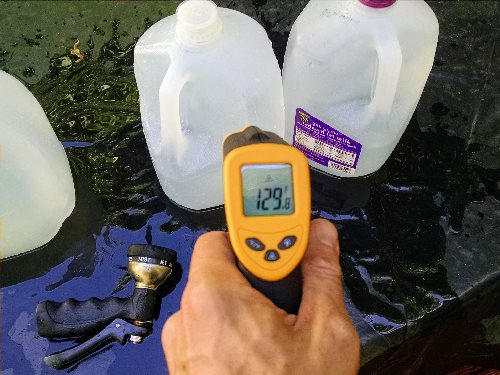
I verified that all three jugs started out at the same temperature of 129 °F. To simulate sweating, the jugs were sprayed down with hot water. Every few minutes, I removed the shirts, reapplied the fake sweat, and put the shirts back on. I tried to wrap the shirts fairly snugly, and they each got partially soaked to mimic a sweaty summer day in NC.
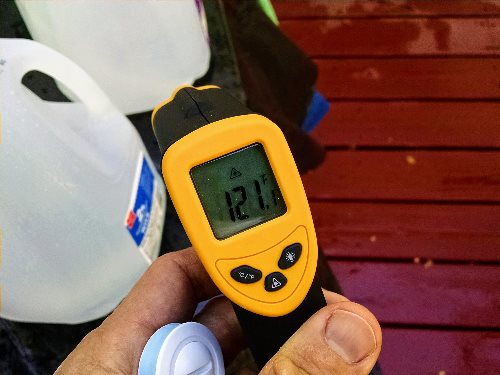
After 20 minutes, I took the temperature of the jugs. Surprisingly, the jugs wearing the cotton and tech shirts were both the same temperature of 120 °F, a drop of 9 °F.
I would have thought the tech shirt would have been warmer, since it supposed to “wick” the water away the skin and then evaporate, preventing the evaporative cooling from happening on the skin. The tech shirt did feel drier than the cotton. But since the cotton shirt was more wet, it stuck closer to the jug and possibly provided better “contact” for the cooling.
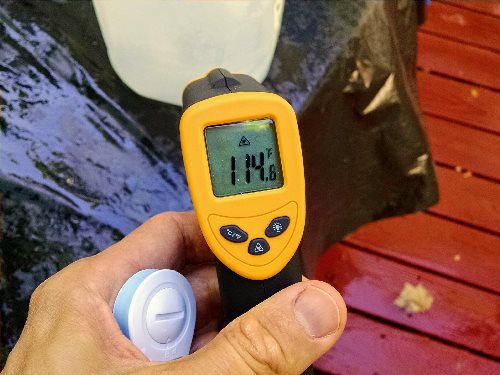
The shirtless jug was at 114 °F, a drop of 15 °F. We can calculate the heat loss, assuming a gallon of water is 3785 grams. The shirtless jug lost 31.8 kcal, and the jugs wearing cotton and tech shirts lost 18.9 kcal.
That’s pretty significant difference. Wearing the shirts reduced heat dissipation by 40%!
So how will wearing a shirt affect your running performance? Clearly, you will run 40% slower. Just kidding. Again, I have no idea. So really, I have not answered any of the questions I set out to answer in the beginning.
The one thing I can say with scientific certainty is that playing with a "Laser Infrared Thermometer Temperature Gun" is fun.